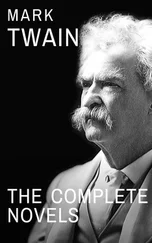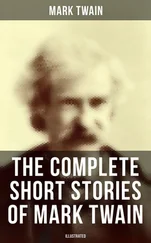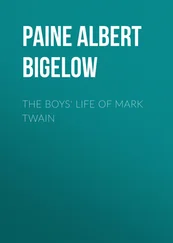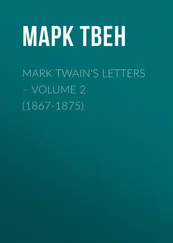Albert Paine - Mark Twain - A Biography. Volume II, Part 2 - 1886-1900
Здесь есть возможность читать онлайн «Albert Paine - Mark Twain - A Biography. Volume II, Part 2 - 1886-1900» — ознакомительный отрывок электронной книги совершенно бесплатно, а после прочтения отрывка купить полную версию. В некоторых случаях можно слушать аудио, скачать через торрент в формате fb2 и присутствует краткое содержание. Жанр: Биографии и Мемуары, foreign_antique, на английском языке. Описание произведения, (предисловие) а так же отзывы посетителей доступны на портале библиотеки ЛибКат.
- Название:Mark Twain: A Biography. Volume II, Part 2: 1886-1900
- Автор:
- Жанр:
- Год:неизвестен
- ISBN:нет данных
- Рейтинг книги:4 / 5. Голосов: 1
-
Избранное:Добавить в избранное
- Отзывы:
-
Ваша оценка:
- 80
- 1
- 2
- 3
- 4
- 5
Mark Twain: A Biography. Volume II, Part 2: 1886-1900: краткое содержание, описание и аннотация
Предлагаем к чтению аннотацию, описание, краткое содержание или предисловие (зависит от того, что написал сам автор книги «Mark Twain: A Biography. Volume II, Part 2: 1886-1900»). Если вы не нашли необходимую информацию о книге — напишите в комментариях, мы постараемся отыскать её.
Mark Twain: A Biography. Volume II, Part 2: 1886-1900 — читать онлайн ознакомительный отрывок
Ниже представлен текст книги, разбитый по страницам. Система сохранения места последней прочитанной страницы, позволяет с удобством читать онлайн бесплатно книгу «Mark Twain: A Biography. Volume II, Part 2: 1886-1900», без необходимости каждый раз заново искать на чём Вы остановились. Поставьте закладку, и сможете в любой момент перейти на страницу, на которой закончили чтение.
Интервал:
Закладка:
"What will you complete the machine for?"
"What will it cost?"
"Twenty thousand dollars; certainly not over $30,000."
"What will you give?"
"I'll give you half."
Clemens was "flush" at this time. His reading tour with Cable, the great sale of Huck Finn, the prospect of the Grant book, were rosy realities. He said:
"I'll do it, but the limit must be $30,000."
They agreed to allow Hamersley a tenth interest for the money he had already invested and for legal advice.
Hamersley consented readily enough, and when in February, 1886, the new contract was drawn they believed themselves heir to the millions of the Fourth Estate.
By this time F. G. Whitmore had come into Clemens's business affairs, and he did not altogether approve of the new contract. Among other things, it required that Clemens should not only complete the machine, but promote it, capitalize it commercially. Whitmore said:
"Mr. Clemens, that clause can bankrupt you."
Clemens answered: "Never mind that, Whitmore; I've considered that. I can get a thousand men worth a million apiece to go in with me if I can get a perfect machine."
He immediately began to calculate the number of millions he would be worth presently when the machine was completed and announced to the waiting world. He covered pages with figures that never ran short of millions, and frequently approached the billion mark. Colonel Sellers in his happiest moments never dreamed more lavishly. He obtained a list of all the newspapers in the United States and in Europe, and he counted up the machines that would be required by each. To his nephew, Sam Moffett, visiting him one day, he declared that it would take ten men to count the profits from the typesetter. He realized clearly enough that a machine which would set and distribute type and do the work of half a dozen men or more would revolutionize type composition. The fact that other inventors besides Paige were working quite as diligently and perhaps toward more simple conclusions did not disturb him. Rumors came of the Rogers machine and the Thorne machine and the Mergenthaler linotype, but Mark Twain only smiled. When the promoters of the Mergenthaler offered to exchange half their interests for a half interest in the Paige patent, to obtain thereby a wider insurance of success, it only confirmed his trust, and he let the golden opportunity go by.
Clemens thinks the thirty thousand dollars lasted about a year. Then Paige confessed that the machine was still incomplete, but he said that four thousand dollars more would finish it, and that with ten thousand dollars he could finish it and give a big exhibition in New York. He had discarded the old machine altogether, it seems, and at Pratt & Whitney's shops was building a new one from the ground up—a machine of twenty thousand minutely exact parts, each of which must be made by expert hand workmanship after elaborate drawings and patterns even more expensive. It was an undertaking for a millionaire.
Paige offered to borrow from Clemens the amount needed, offering the machine as security. Clemens supplied the four thousand dollars, and continued to advance money from time to time at the rate of three to four thousand dollars a month, until he had something like eighty thousand dollars invested, with the machine still unfinished. This would be early in 1888, by which time other machines had reached a state of completion and were being placed on the market. The Mergenthaler, in particular, was attracting wide attention. Paige laughed at it, and Clemens, too, regarded it as a joke. The moment their machine was complete all other machines would disappear. Even the fact that the Tribune had ordered twenty-three of the linotypes, and other journals were only waiting to see the paper in its new dress before ordering, did not disturb them. Those linotypes would all go into the scrap-heap presently. It was too bad people would waste their money so. In January, 1888, Paige promised that the machine would be done by the 1st of April. On the 1st of April he promised it for September, but in October he acknowledged there were still eighty-five days' work to be done on it. In November Clemens wrote to Orion:
The machine is apparently almost done—but I take no privileges on that account; it must be done before I spend a cent that can be avoided. I have kept this family on very short commons for two years and they must go on scrimping until the machine is finished, no matter how long that may be.
By the end of '88 the income from the books and the business and Mrs. Clemens's Elmira investments no longer satisfied the demands of the type-setter, in addition to the household expense, reduced though the latter was; and Clemens began by selling and hypothecating his marketable securities. The whole household interest by this time centered in the machine. What the Tennessee land had been to John and Jane Clemens and their children, the machine had now become to Samuel Clemens and his family. "When the machine is finished everything will be all right again" afforded the comfort of that long-ago sentence, "When the Tennessee land is sold."
They would have everything they wanted then. Mrs. Clemens planned benefactions, as was her wont. Once she said to her sister:
"How strange it will seem to have unlimited means, to be able to do whatever you want to do, to give whatever you want to give without counting the cost."
Straight along through another year the three thousand dollars and more a month continued, and then on the 5th of January, 1889, there came what seemed the end—the machine and justifier were complete! In his notebook on that day Mark Twain set down this memorandum:
Saturday, January 5, 1889-12.20 P.M. At this moment I have seen a line of movable type spaced and justified by machinery! This is the first time in the history of the world that this amazing thing has ever been done. Present: J. W. Paige, the inventor; Charles Davis, | Mathematical assistants Earll | & mechanical Graham | experts Bates, foreman, and S. L. Clemens. This record is made immediately after the prodigious event.
Two days later he made another note:
Monday, January 7—4.45 P.m. The first proper name ever set by this new keyboard was William Shakspeare. I set it at the above hour; & I perceive, now that I see the name written, that I either misspelled it then or I've misspelled it now.
The space-bar did its duty by the electric connections & steam & separated the two words preparatory to the reception of the space.
It seemed to him that his troubles were at an end. He wrote overflowing letters, such as long ago he had written about his first mining claims, to Orion and to other members of the family and to friends in America and Europe. One of these letters, written to George Standring, a London printer and publisher, also an author, will serve as an example.
The machine is finished! An hour and forty minutes ago a line of movable type was spaced and justified by machinery for the first time in the history of the world. And I was there to see.
That was the final function. I had before seen the machine set type, automatically, and distribute type, and automatically distribute its eleven different thicknesses of spaces. So now I have seen the machine, operated by one individual, do the whole thing, and do it a deal better than any man at the case can do it.
This is by far and away the most marvelous invention ever contrived by man. And it is not a thing of rags and patches; it is made of massive steel, and will last a century.
She will do the work of six men, and do it better than any six men that ever stood at a case.
The death-warrant of all other type-setting machines in this world was signed at 12.20 this afternoon, when that first line was shot through this machine and came out perfectly spaced and justified. And automatically, mind you.
Читать дальшеИнтервал:
Закладка:
Похожие книги на «Mark Twain: A Biography. Volume II, Part 2: 1886-1900»
Представляем Вашему вниманию похожие книги на «Mark Twain: A Biography. Volume II, Part 2: 1886-1900» списком для выбора. Мы отобрали схожую по названию и смыслу литературу в надежде предоставить читателям больше вариантов отыскать новые, интересные, ещё непрочитанные произведения.
Обсуждение, отзывы о книге «Mark Twain: A Biography. Volume II, Part 2: 1886-1900» и просто собственные мнения читателей. Оставьте ваши комментарии, напишите, что Вы думаете о произведении, его смысле или главных героях. Укажите что конкретно понравилось, а что нет, и почему Вы так считаете.












